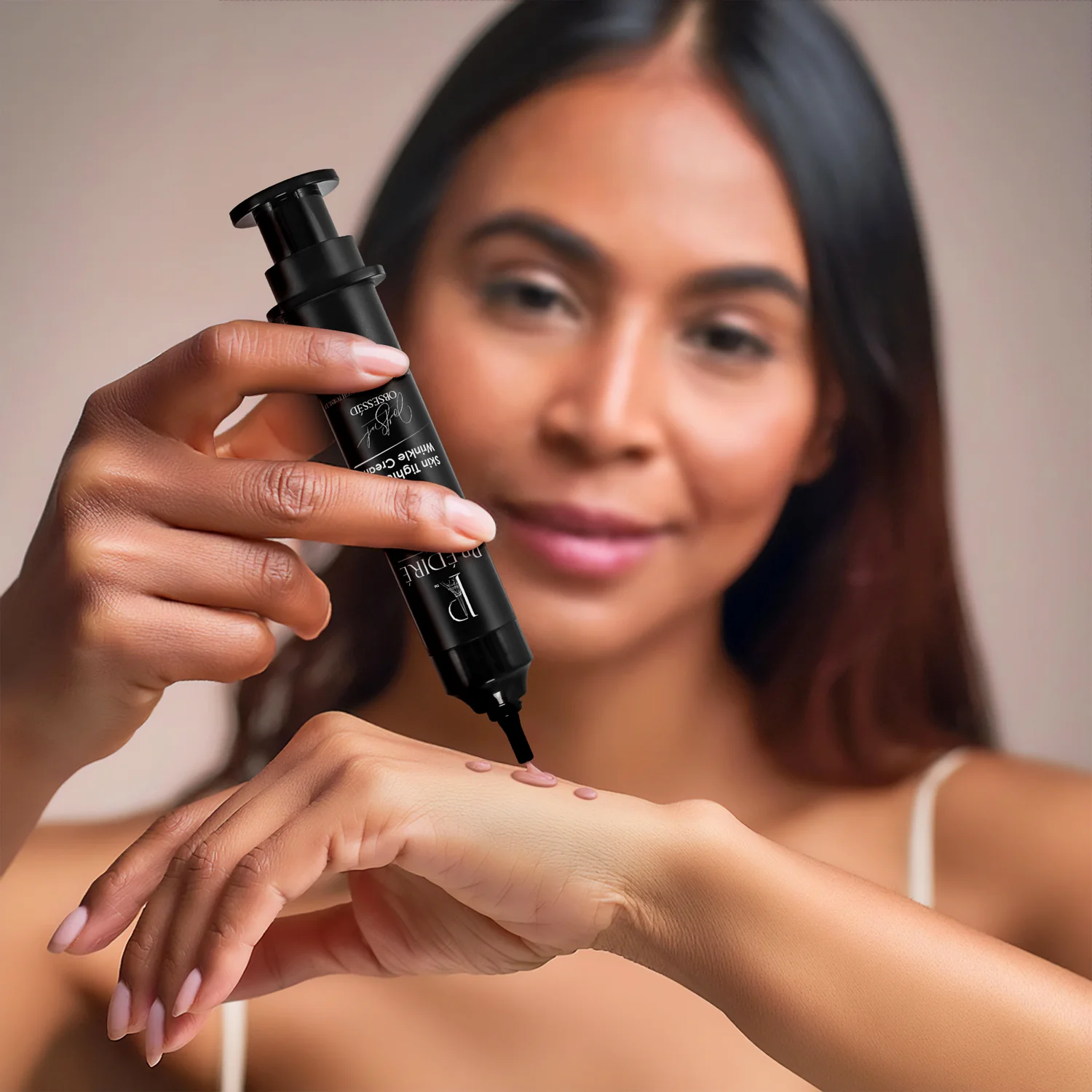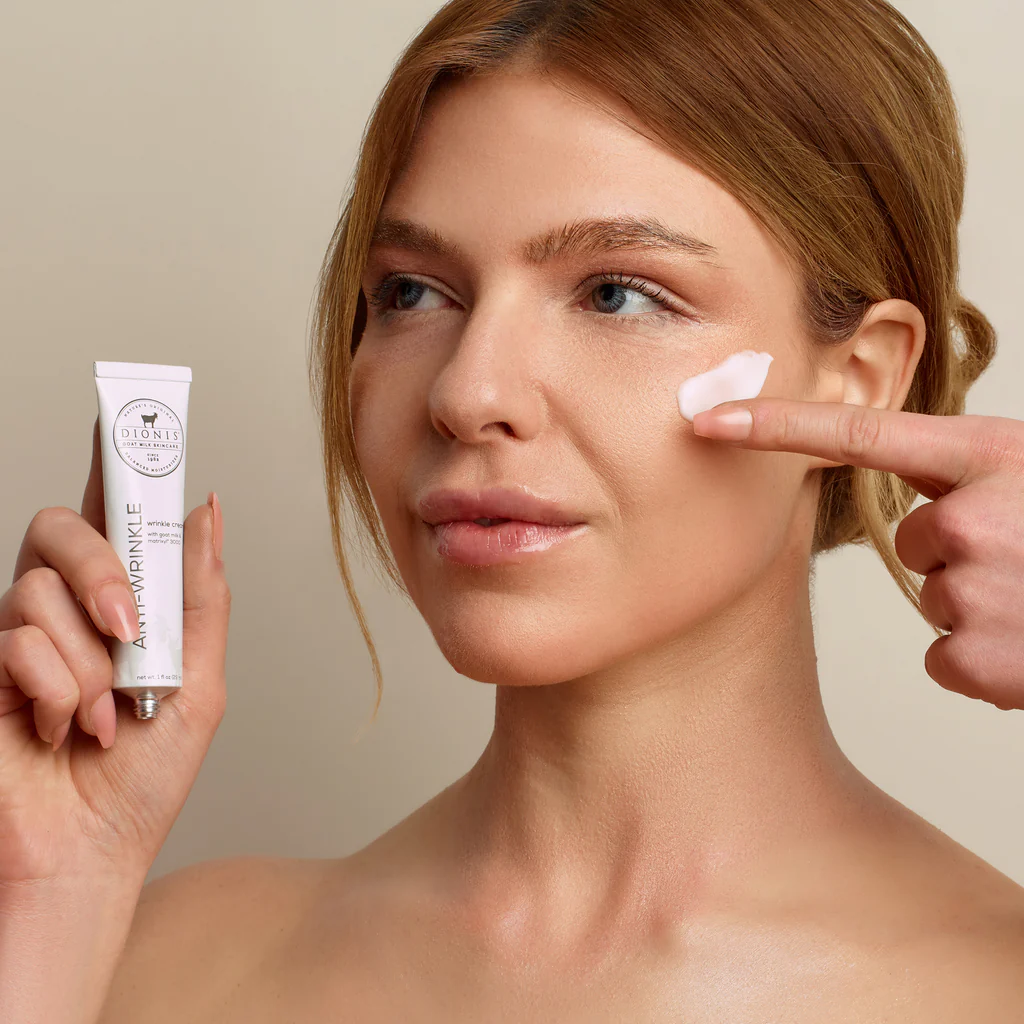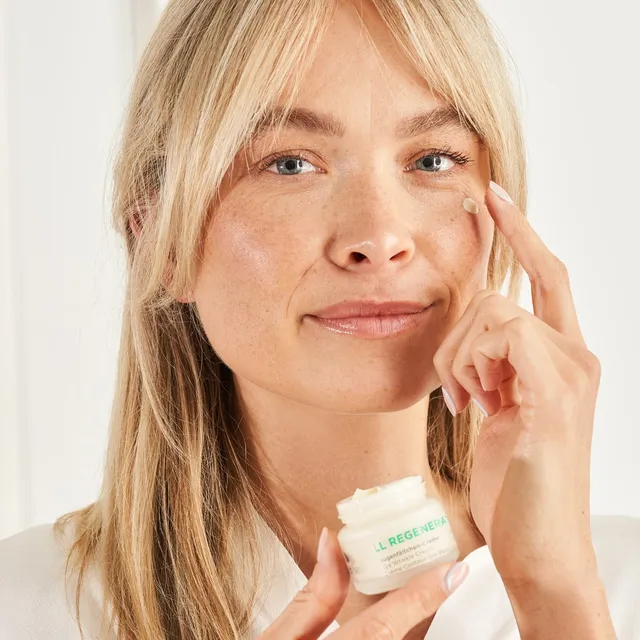Understanding Wrinkles and Their Causes
Wrinkles, those telltale signs of aging, appear on faces due to various factors. Time plays a significant role as skin naturally loses elasticity and collagen with age. Sun exposure accelerates this process, breaking down skin cells and reducing moisture. Repeated facial expressions create lines that eventually become permanent. Lifestyle choices such as smoking and poor diet contribute to premature aging. Genetics also influence how quickly face wrinkle cream form. Stress impacts skin health, leading to the breakdown of collagen and elastin. Dehydration causes skin to appear more wrinkled and less plump. Environmental pollutants damage skin cells and promote free radical formation. Sleep position can create sleep lines that become permanent over time.
Hormonal changes, particularly during menopause, affect skin thickness and elasticity. Understanding these causes helps in choosing the right wrinkle cream. Different creams target specific causes, offering a range of solutions. Some focus on hydration, while others boost collagen production. Antioxidant-rich formulas combat free radical damage. Peptide-based creams aim to relax facial muscles. Knowing the root cause of wrinkles guides effective treatment selection. This knowledge empowers consumers to make informed decisions about skincare. It also helps in developing realistic expectations about cream effectiveness. By addressing the underlying causes, wrinkle creams can provide more than surface-level results.

Key Ingredients in Effective Face Wrinkle Cream
Effective face wrinkle cream contain a variety of powerful ingredients. Retinoids, derived from Vitamin A, stimulate collagen production and cell turnover. Hyaluronic acid attracts moisture, plumping the skin and reducing the appearance of fine lines. Peptides help boost collagen and elastin production, improving skin firmness. Antioxidants like Vitamins C and E protect against free radical damage. Niacinamide improves skin elasticity and reduces inflammation. Alpha-hydroxy acids (AHAs) exfoliate dead skin cells, promoting a smoother appearance. Coenzyme Q10 helps reduce fine lines around the eyes.
Glycerin and ceramides lock in moisture, keeping skin hydrated. Green tea extract provides antioxidant benefits and soothes skin. Grape seed extract offers potent antioxidant properties. Vitamin K helps reduce the appearance of dark circles and fine lines. Caffeine tightens and brightens skin temporarily. Squalane mimics the skin’s natural oils, providing deep hydration. Oils like jojoba and argan nourish and moisturize the skin. Some creams include growth factors to stimulate skin renewal. Sunscreen ingredients protect against further sun damage. The combination of these ingredients targets multiple aspects of skin aging. Understanding each ingredient’s role helps in selecting the right cream. It’s important to note that individual results may vary based on skin type and concerns.
How to Choose the Right Face Wrinkle Cream
Selecting the right face wrinkle cream requires careful consideration of several factors. Skin type plays a crucial role in determining suitable ingredients. Oily skin benefits from lightweight, non-comedogenic formulas. Dry skin needs richer creams with intense hydration. Sensitive skin requires gentle, fragrance-free options. Consider specific skin concerns such as deep wrinkles or fine lines. Look for creams targeting your age group, as needs change over time. Read ingredient lists carefully, avoiding any known allergens. Check for clinically proven ingredients with scientific backing. Consider the concentration of active ingredients for effectiveness.
Look for products from reputable brands with positive customer reviews. Price doesn’t always indicate quality, so compare options. Consider packaging that protects ingredients from light and air. Avoid products with long lists of artificial fragrances and colors. Consult a dermatologist for personalized recommendations if possible. Consider your daily routine and choose a cream that fits easily. Look for multitasking products that offer additional benefits like sun protection. Consider seasonal changes in your skin’s needs when selecting creams. Be patient, as most creams take weeks or months to show results. Don’t be swayed by marketing claims alone; research ingredients independently. Remember that no single cream works for everyone, so be prepared to experiment.

Proper Application Techniques for Maximum Effectiveness
Applying wrinkle cream correctly maximizes its effectiveness. Start with clean, dry skin to ensure better absorption. Use lukewarm water for cleansing, as hot water can strip natural oils. Pat skin dry gently; avoid rubbing, which can irritate. Apply cream to slightly damp skin for better absorption. Use upward, gentle motions to avoid pulling on the skin. Pay special attention to areas prone to wrinkles like eyes and mouth. Use ring finger for delicate eye area to avoid excessive pressure. Apply a pea-sized amount; more isn’t always better. Layer products from thinnest to thickest consistency.
Allow each product to absorb before applying the next. Use cream consistently, both morning and night, for best results. Adjust application based on season and skin needs. Be gentle when applying to avoid damaging delicate skin. Extend application to neck and décolletage for comprehensive care. Consider using different creams for day and night. Incorporate facial massage techniques to boost circulation. Use tools like jade rollers or gua sha for enhanced product penetration. Don’t neglect other skincare steps like toning and exfoliating. Be patient and consistent; results take time to appear. Adapt your routine as your skin’s needs change over time.
Common Myths About Wrinkle Creams Debunked
Many myths surround face wrinkle cream, leading to confusion among consumers. One common myth suggests that expensive creams are always more effective. In reality, price doesn’t guarantee quality or results. Another misconception is that creams can completely erase deep wrinkles. While they can improve appearance, they can’t reverse all signs of aging. Some believe that wrinkle creams work instantly, which isn’t true. Most require consistent use over weeks or months. The idea that natural ingredients are always better is another myth. Synthetic ingredients can be equally effective and safe. Many think that one cream suits all skin types, which is incorrect.
Different skin types require different formulations. Some believe that wrinkle creams are only for older individuals. Prevention can start in the 20s or 30s. The myth that more product means better results can lead to overuse. A small amount is usually sufficient for effectiveness. Some think wrinkle creams replace the need for sunscreen. Sun protection remains crucial in preventing aging. The belief that creams can replace professional treatments is misguided. They complement but don’t replace procedures like Botox. Understanding these myths helps in setting realistic expectations. It also aids in making informed decisions about skincare choices.

Combining Wrinkle Creams with Other Anti-Aging Strategies
Wrinkle creams work best as part of a comprehensive anti-aging strategy. A healthy diet rich in antioxidants supports skin health from within. Regular exercise improves circulation, benefiting skin appearance. Adequate hydration keeps skin plump and reduces fine lines. Sufficient sleep allows skin time to repair and regenerate. Stress management techniques help prevent stress-related aging. Sun protection remains crucial in preventing further damage. Regular exfoliation removes dead skin cells, enhancing cream absorption. Facial exercises may help tone muscles and improve skin appearance. Professional treatments like facials complement at-home care.
Incorporating serums can target specific concerns more intensively. Using a humidifier helps maintain skin hydration, especially in dry climates. Avoiding smoking and excessive alcohol consumption benefits skin health. Regular skin check-ups with a dermatologist ensure optimal care. Adapting skincare routine to seasonal changes maintains skin balance. Using silk pillowcases reduces friction on skin while sleeping. Facial massages improve blood flow and promote lymphatic drainage. Staying consistent with a skincare routine yields the best results. Patience is key, as visible improvements take time. Remember that lifestyle factors significantly impact skin health. A holistic approach to skincare yields the most noticeable results.
Potential Side Effects and How to Avoid Them
While wrinkle creams offer benefits, they can sometimes cause side effects. Common issues include redness, irritation, and dryness. Some ingredients may cause allergic reactions in sensitive individuals. Retinoids often cause initial dryness and peeling. Over-application can lead to clogged pores and breakouts. Some creams may increase sun sensitivity, requiring extra sun protection. Mixing incompatible products can cause adverse reactions. To avoid these issues, start with a patch test on a small area. Introduce new products gradually into your routine. Follow application instructions carefully to prevent overuse. If irritation occurs, reduce frequency or concentration of use. Choose products suitable for your skin type to minimize reactions.
Be cautious when combining active ingredients like retinoids and AHAs. Consult a dermatologist if persistent issues arise. Pay attention to expiration dates to avoid using degraded products. Store creams properly to maintain their effectiveness and safety. Be aware of potential interactions with other skincare or medications. If pregnant or nursing, consult a doctor before using certain ingredients. Don’t ignore persistent redness, burning, or itching. These may indicate an allergic reaction. Remember that some initial irritation is normal with certain active ingredients. However, severe or lasting discomfort warrants professional advice.
The Role of Diet and Lifestyle in Wrinkle Prevention
Diet and lifestyle play crucial roles in maintaining youthful skin. A balanced diet rich in fruits and vegetables provides essential nutrients. Antioxidants from berries and leafy greens combat free radical damage. Omega-3 fatty acids from fish support skin structure and hydration. Adequate protein intake helps maintain collagen production. Limiting sugar consumption prevents glycation, which ages skin. Staying hydrated keeps skin plump and reduces the appearance of fine lines. Regular exercise boosts circulation, benefiting skin health. Getting enough sleep allows for cellular repair and regeneration. Managing stress through techniques like meditation benefits skin.
Avoiding smoking prevents premature aging and collagen breakdown. Limiting alcohol consumption helps maintain skin hydration. Protecting skin from sun damage is crucial for preventing wrinkles. Maintaining a consistent skincare routine supports overall skin health. Regular exfoliation promotes cell turnover for fresher-looking skin. Using a humidifier in dry environments helps maintain skin moisture. Avoiding harsh skincare products prevents unnecessary irritation. Practicing good posture can prevent the formation of certain wrinkles. Limiting screen time reduces squinting, which can cause crow’s feet. Incorporating facial yoga or exercises may help tone facial muscles. Remember, internal health reflects on skin appearance. A holistic approach to skincare yields the most significant results.

The Future of Wrinkle Cream Technology
The future of wrinkle cream technology looks promising with ongoing research. Advancements in ingredient technology focus on more effective formulations. Nanotechnology allows for deeper penetration of active ingredients. Personalized skincare based on genetic analysis is emerging. Stem cell technology in skincare shows potential for regeneration. Microbiome-focused products aim to balance skin’s natural flora. Smart devices for at-home skin analysis guide product selection. Time-release formulations provide prolonged ingredient delivery. Combination therapies integrating topicals with devices show promise. Environmentally conscious, sustainable packaging is becoming standard. Plant-based alternatives to traditional ingredients are being developed.
Artificial intelligence aids in creating more effective formulations. Clinical studies become more rigorous, providing better efficacy data. Focus shifts to preventative care for younger demographics. Multi-functional products address various concerns simultaneously. Innovations in texture and application improve user experience. Increased transparency in ingredient sourcing and manufacturing. Integration of traditional remedies with modern science emerges. Customizable products allow users to tailor to specific needs. Emphasis on holistic approaches combining topicals with ingestibles. These advancements promise more effective and personalized wrinkle treatments. As technology evolves, wrinkle creams become increasingly sophisticated. The future holds exciting possibilities for anti-aging skincare.
Making an Informed Decision: Wrinkle Creams vs. Professional Treatments
Choosing between wrinkle creams and professional treatments requires careful consideration. Face wrinkle cream offer a non-invasive, at-home solution for mild to moderate concerns. They provide gradual results with consistent, long-term use. Creams are generally more affordable than professional treatments. They allow for daily maintenance and prevention of future wrinkles. Professional treatments like Botox or fillers offer more immediate results. These treatments can address deeper wrinkles more effectively. However, they come with higher costs and potential risks. Professional treatments often require maintenance sessions. Creams can be easily incorporated into daily routines.
Treatments provide more dramatic results for severe wrinkles. Some professional options offer long-lasting effects lasting months. Creams require no downtime, unlike some professional procedures. Professional treatments are performed by trained experts. Creams allow for more control over application and ingredients. A combination of both approaches often yields optimal results. Consider your budget, time commitment, and desired outcomes. Consult a dermatologist to determine the best approach for your skin. Remember that results vary based on individual skin types and concerns. Weigh the pros and cons of each option carefully. Ultimately, the choice depends on personal preferences and skin needs.
